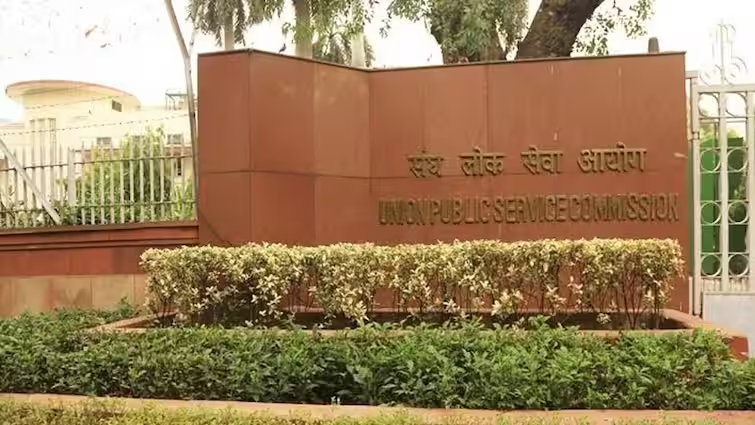UPSC has issued Ad for lateral entry into Civil Services. The Centre announced a new round of lateral entry for senior positions in the bureaucracy, targeting candidates from the private sector and other fields.
SP and BSP Criticize BJP’s Lateral Entry Plan for Bureaucracy, Accuse of Constitutional Violation
The concept of lateral entry was first introduced under the Congress-led UPA regime and strongly endorsed by the Second Administrative Reforms Commission established by it in 2005, government sources said on Sunday.
The Union Public Service Commission (UPSC) on Saturday issued a notification for recruiting 45 joint secretaries, directors and deputy secretaries through lateral entry — referred to as the appointment of specialists (including those from the private sector) in government departments. The decision ignited criticism from opposition parties, which claimed it undermined the reservation rights of OBCs, SCs and STs.
However, it is important to recognise that the concept of lateral entry was first introduced under the Congress-led United Progressive Alliance (UPA) government and strongly endorsed by the Second Administrative Reforms Commission (ARC), established in 2005 and chaired by (senior Congress leader) Veerappa Moily, the sources said.
The government has historically inducted outside talent into its higher tiers, typically in advisory roles but occasionally even in key administrative assignments, they said. For instance, the chief economic advisor is traditionally a lateral entrant who, according to the rules, must be below 45 years of age and is invariably an eminent economist, they said.
Large-scale lateral hiring: Navigating government systems holds key
Additionally, several other distinguished individuals have been appointed at the highest levels as secretaries to the government, they added. The Second ARC was established to recommend reforms to enhance the effectiveness, transparency and citizen-friendliness of the Indian administrative system.
In its 10th Report titled “Refurbishing of Personnel Administration Scaling New Heights”, the commission emphasised the need for reforms in personnel management within the civil services. One of its key recommendations was to introduce lateral entry into higher government positions requiring specialised knowledge and skills, the sources said.
Stressing on the need for expertise, the ARC had identified that certain government roles required specialised knowledge not always available within the traditional civil services. It recommended recruiting professionals from the private sector, academia and public sector undertakings to fill these gaps, they said.
UPSC lateral hiring – Timeline

The ARC proposed the creation of a talent pool of professionals who could be inducted into the government on a short-term or contractual basis, bringing fresh perspectives and cutting-edge expertise in areas such as economics, finance, technology and public policy, the government sources said.The commission had emphasised the importance of a transparent and merit-based selection process for lateral entrants, suggesting the establishment of a dedicated agency to oversee their recruitment and management.
It had also stressed the importance of integrating lateral entrants into the existing civil services in a manner that maintained the integrity and ethos of the civil services while leveraging the specialised skills they brought, they said.
The First ARC, established in 1966 under the chairmanship of Morarji Desai — who later served as prime minister between March 1977 and July 1979 — laid the groundwork for future discussions on the need for specialised skills within the civil services.
While it did not specifically advocate for lateral entry as understood today, it emphasised professionalisation, training and personnel management reforms to ensure the bureaucracy could effectively meet the challenges of a rapidly changing nation, the sources said. The lateral entry scheme was formally introduced during Prime Minister Narendra Modi’s tenure, driven by the recognition of the need for domain experts to enhance the efficiency and responsiveness of India’s administrative machinery, they said.
In 2018, the government took a significant step by announcing vacancies for senior positions such as joint secretaries and directors, marking the first time that professionals from both the private and public sectors were invited to apply for these high-level roles, the sources further said. The selection process was rigorous, emphasising candidates’ qualifications, experience and suitability for these strategic positions, they said.
This initiative was not without precedent; it was deeply influenced by the recommendations of the Second ARC, which had earlier laid the conceptual groundwork for lateral entry, according to the sources. The ARC had emphasised the importance of bringing external expertise into the civil services to make the administration more dynamic and responsive to the complexities of modern governance, they said.
The recruitment of joint secretaries in 2018 effectively operationalised the ARC’s vision, demonstrating a commitment to integrating specialised skills from outside the traditional civil service framework.
These reforms have continued to influence ongoing discussions about how best to modernise India’s public administration, ensuring it meets the evolving demands of governance in the 21st century, the sources added.
(Only the headline and picture of this report may have been edited by the The Courtroom staff; the rest of the content is auto-generated from a syndicated feed.)
Share your news, articles, deals, columns, or press releases with us! Click the link to submit and join our platform today.


